 |
 |
 |
| |
SEX DIFFERENCES IN THE ASSOCIATION OF HIV WITH METABOLIC-FATTY LIVER DISEASE
|
| |
| |
CROI 2023 Feb 2023
Dana Kablawi1, Thierry Fotsing Tadjo1, Jovana Milic2, Wesal Elgretli3, Claudia Gioe'4, Bertrand Lebouché5, Antonio Cascio4, Giovanni Guaraldi2, Giovanni Mazzola4, Giada Sebastiani1,3,5
1Deparment of Medicine, McGill University Health Centre, Montreal, Canada
2Modena HIV Metabolic Clinic, University of Modena and Reggio Emilia, Modena, Italy
3Division of Experimental Medicine, McGill University, Montreal, Canada
4Department of Health Promotion Sciences and Mother and Child Care "Giuseppe D'Alessandro", University of Palermo, Palermo, Italy
5Department of Family Medicine, McGill University Health Centre, Montreal, Canada
6Division of Gastroenterology and Hepatology, McGill University Health Centre, Montreal, Canada
program abstract
Background: People with HIV (PWH) are at high risk for metabolic-dysfunction associated fatty liver disease (MAFLD). In the general population, sex differences seem to exist in frequency and severity of MAFLD, with higher prevalence of MAFLD in men, but higher incidence of liver fibrosis in women. Less is known about sex differences in MAFLD and liver fibrosis in the setting of HIV infection.
Methods: This was a multicenter cohort study including consecutive PWH who underwent screening for MAFLD and liver fibrosis by liver stiffness measurement (LSM) with associated controlled attenuation parameter (CAP). MAFLD was defined as the presence of hepatic steatosis, diagnosed as CAP>270 dB/m, plus any among type 2 diabetes, overweight (BMI >25 Kg/m2) or two other metabolic abnormalities. Significant liver fibrosis was diagnosed as LSM>8 kPa. Incidence of MAFLD and significant liver fibrosis was assessed through survival analysis.
Results: 1359 PWH (25% females, 70% HIV mono-infected) were included. Prevalence of MAFLD at baseline was lower in women than in men with HIV (17.7% vs. 24.3%, p=0.013). Conversely, there was no difference in prevalence of liver fibrosis (10.7% vs. 13.4%). Women with MAFLD were more frequently of black ethnicity (48% vs. 14%, p< 0.001), had lower ALT (26.4+20.4 vs. 33.4+22.5; p=0.035), higher HDL cholesterol (1.46+0.57 vs. 1.11+0.33; p< 0.001), lower triglycerides (1.69+0.96 vs. 2.47+2.63; p=0.035) compared to men with MAFLD. 485 of these PWH were followed for a median of 3.5 years. Incidence of MAFLD was similar between women and men with HIV. However, incidence of liver fibrosis was higher in women compared to men with HIV (7.0 per 100 person-years [PY] vs. 5.9 per 100 PY; p=0.035) (Figure 1). The higher incidence of significant liver fibrosis occurred particularly after the age of 50 years. On multivariable Cox regression analysis and after adjusting for age, presence of MAFLD (adjusted hazard ratio [aHR] 3.3, 95% CI 2.0-5.6) and female sex (aHR 2.2, 95% CI 1.3-3.5) were independent predictors of developing significant liver fibrosis while CD4 cell count was protective (aHR 0.99, 95% CI 0.99-0.99).
Conclusion: MAFLD seems a sexual dimorphic disease in PWH. Despite having lower rates of MAFLD, women with HIV have higher incidence of significant liver fibrosis compared to men, especially after 50 years of age. Future studies should target adequate consideration of sex differences in clinical investigation of MAFLD to fill current gaps and implement precision medicine for PWH.
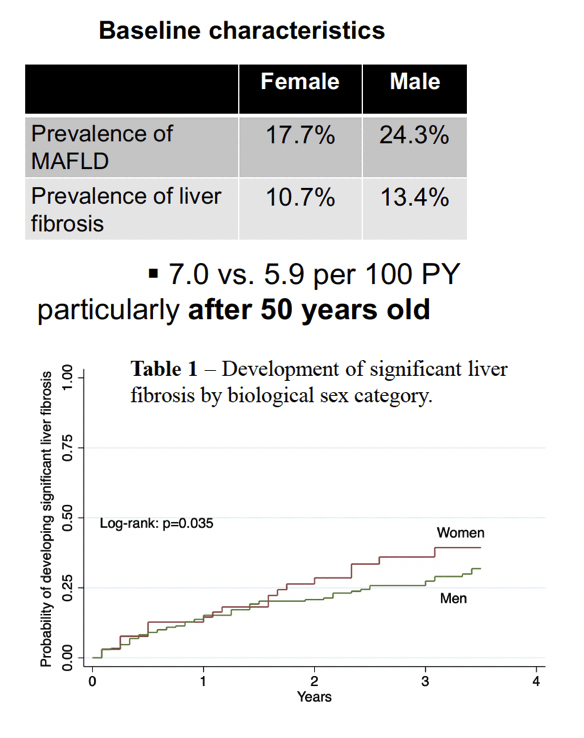
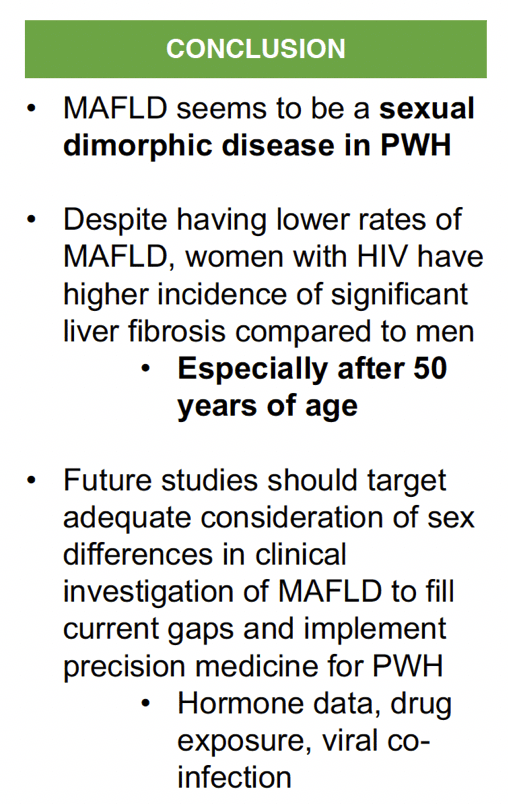
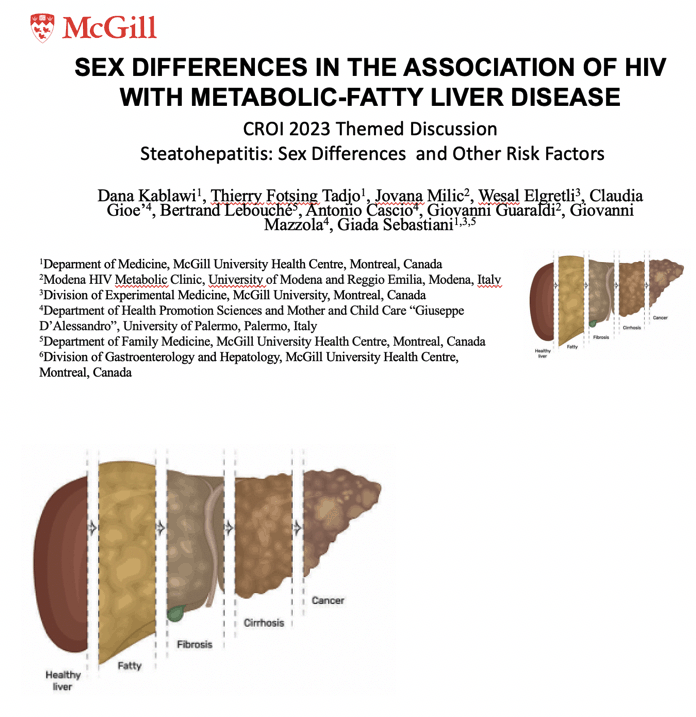
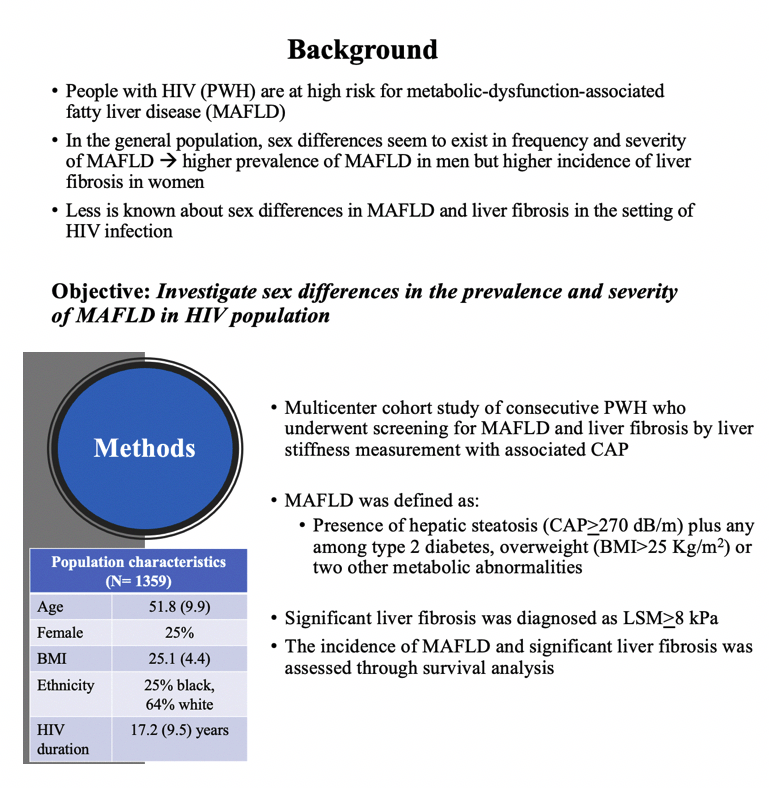
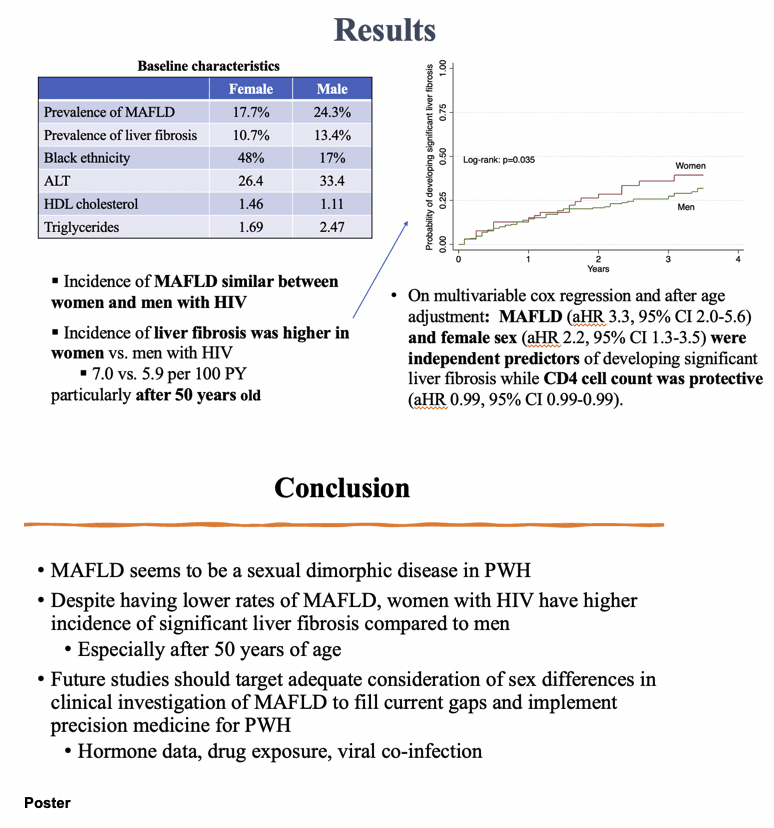
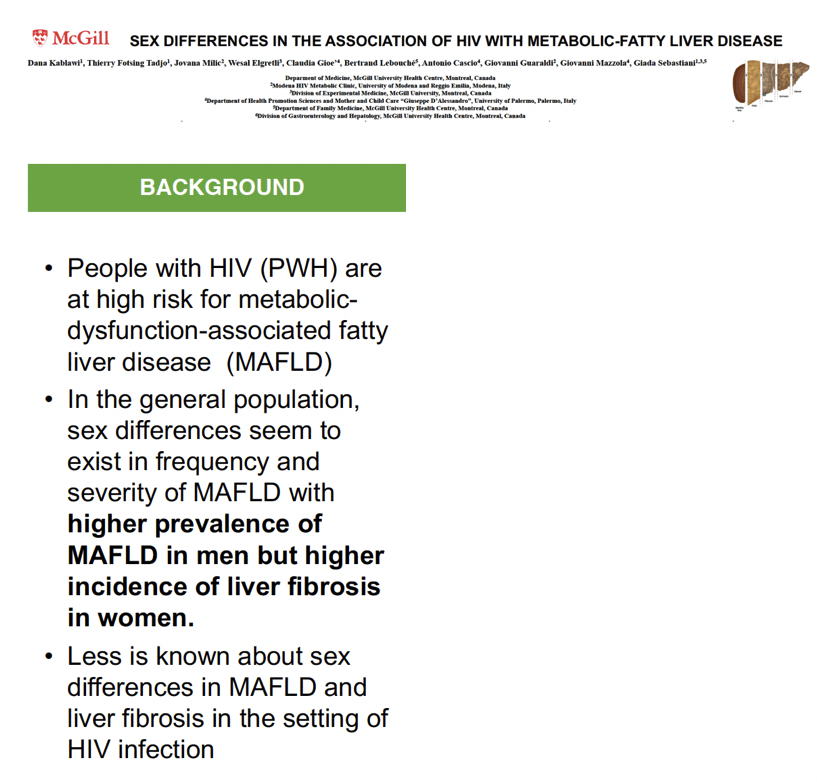
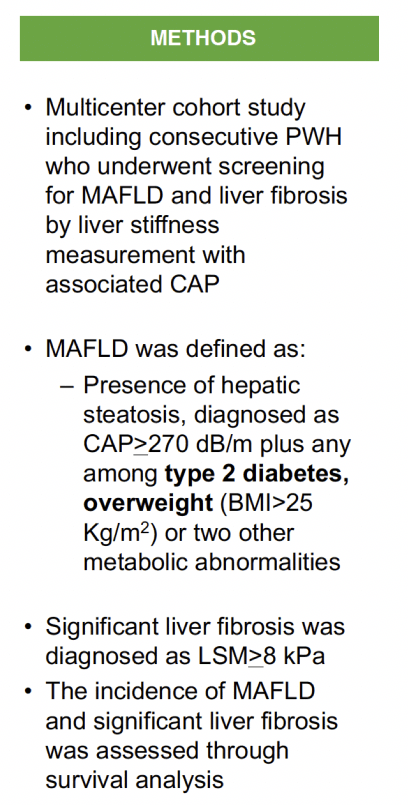
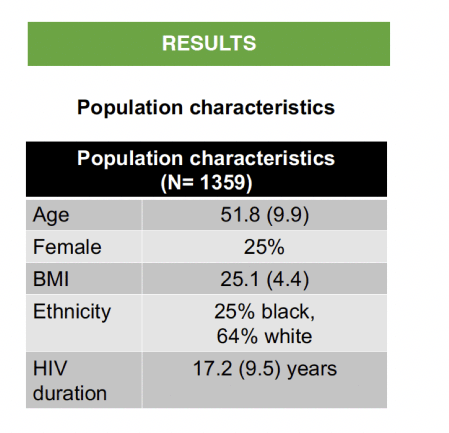

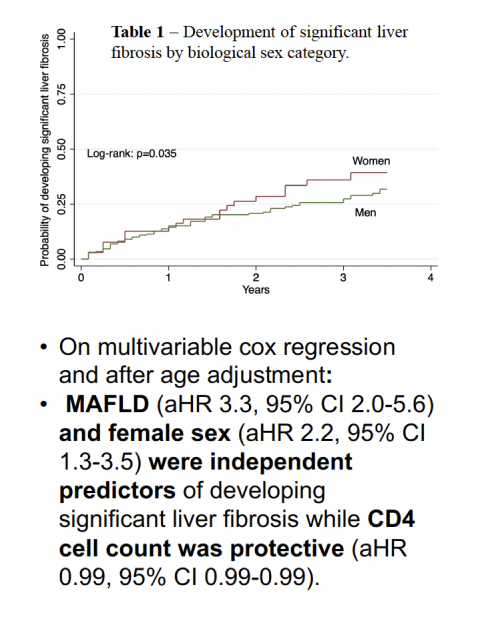

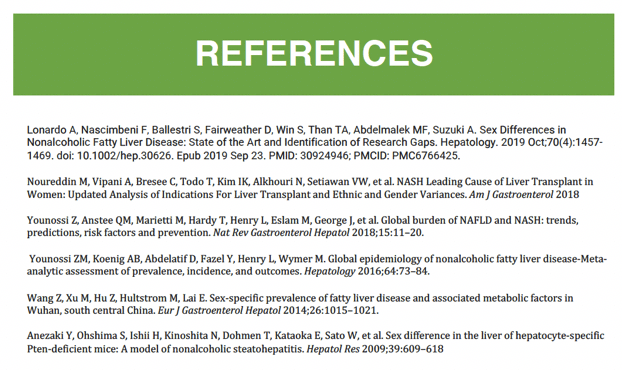
|
| |
|
 |
 |
|
|